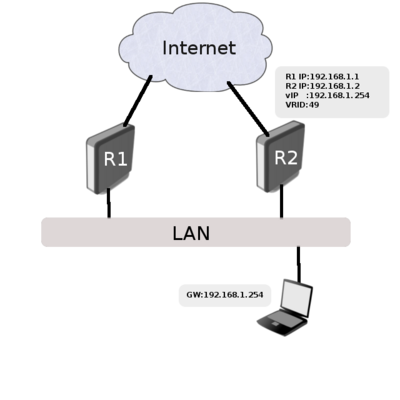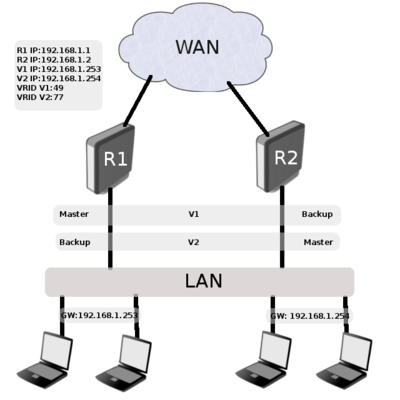Manual:VRRP-examples: Difference between revisions
Jump to navigation
Jump to search
No edit summary |
No edit summary |
||
| Line 4: | Line 4: | ||
<p>This section contains several useful VRRP configuration examples</p> | <p>This section contains several useful VRRP configuration examples</p> | ||
<h3>Basic Setup</h3> | <h3>Basic Setup</h3> | ||
[[Image:vrrp-basic.png | [[Image:vrrp-basic.png|Basic VRRP example |400px|Basic VRRP example ]] | ||
<p> | <p> | ||
This is the basic VRRP configuration example. It should not be used on real time networks.<br/> | This is the basic VRRP configuration example. It should not be used on real time networks.<br/> | ||
Revision as of 14:13, 3 October 2008
VRRP Configuration Examples
This section contains several useful VRRP configuration examples
Basic Setup
This is the basic VRRP configuration example. It should not be used on real time networks.
Any message originated from client to internet will be sent to R1 router.
According to this configuration, as long as the master, R1, is functional, all traffic destined to the external network gets directed to R1. But as soon as R1 fails, R2 takes over as the master and starts handling packets forwarded to the interface associated with IP(R1).
Load sharing

